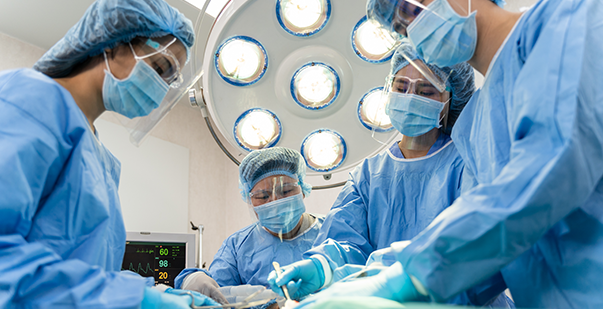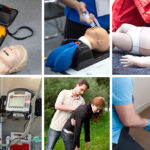Operations of any kind are significant trauma for the body. Most people do not have issues with it. However, some could have a heart attack during surgery. CPR for operation theater is a critical skill that every surgeon and attendant should take along with other life-saving courses. This blog talks about the guidelines of CPR in an operation theater and the modern technology for resuscitation today.
CPR guidelines that are specific to the operation theater
A few cardiopulmonary resuscitation (CPR) guidelines are specific to the operating room. These guidelines are designed to ensure that CPR is performed safely and effectively in this complex environment.
- Do Not Delay CPR: If a patient experiences cardiac arrest in the operating theater, do not delay CPR. If needed, start chest compressions now. Push on the center of the chest until help comes. Stay calm and follow emergency instructions.
- Be Aware Of The Environment: The operating theater is complex, and several hazards could interfere with CPR. Be aware of these hazards and take steps to mitigate them. For example, ensure that no sharp objects or wires on the floor could cause injury.
- Use The Appropriate Equipment: A variety of equipment can be used for CPR in the operating theater. Use the appropriate equipment for the situation. For example, if the patient is still connected to the operating table, you may need a manual defibrillator.
- Communicate with the Team: CPR is a team effort. Communicate with the team members and coordinate your efforts. It will help to ensure that CPR is performed safely and effectively.
- Keep the patient’s Airway Open: Use the head-tilt/chin-lift or jaw-thrust maneuver to keep the patient’s airway open.
- Provide Rescue Breaths: If the patient is not breathing, provide rescue breaths. Use a bag-mask device or a pocket mask to deliver rescue breaths.
- Monitor Closely: Monitor the patient’s condition during CPR. It includes checking the patient’s pulse, breathing, and level of consciousness.
- Call For Help: If you cannot provide CPR effectively, call for help. Several healthcare professionals in the operating theater can help you.
Enhancing the effectiveness of CPR through cutting-edge technologies and practices
The effectiveness of CPR can vary depending on several factors, including the skill of the person performing it, the quality of the chest compressions, and the time to medical attention. Several cutting-edge technologies and practices are being developed to enhance the effectiveness of CPR. These include:
- Automated External Defibrillators (AEDs): AEDs can deliver an electric shock to the heart, which can sometimes restart it. AEDs are ordinary in public places and can be used by anyone with minimal training.
- Wearable Devices: Several wearable devices can monitor a person’s heart rate and rhythm. These devices can alert the wearer if they are experiencing cardiac arrest and provide instructions on how to perform CPR.
- Robotic CPR Devices: Robotic CPR devices can perform chest compressions more effectively than humans. These devices are still in development, but they have the potential to improve the survival rates for cardiac arrest victims significantly.
- New Drugs and Treatments: Several new drugs and treatments can improve the survival rates of cardiac arrest victims. These treatments include drugs that can help to restore the heart’s rhythm and devices that can deliver oxygen directly to the heart.
The development of these cutting-edge technologies and practices gives hope to the millions of people who suffer from cardiac arrest each year. With continued research and development, CPR may become a routine procedure that can save countless lives.
FAQ’s
What happens if CPR needs to be delivered during surgery?
If a patient collapses during surgery, the doctors must immediately take action. Most of the time, the attendants should start chest compressions immediately and ensure they also deliver oxygen. However, delivering CPR in an operation theater is nerve-wracking as it means the patient has gone into cardiac arrest mid-surgery.
What is the most critical thing to remember during CPR?
The gap or interruption between chest compressions is critical in CPR. It is the most crucial thing that can help a victim sail through. There should never be more than 10 seconds of interruptions between chest compressions.
What is more critical, rescue breaths or chest compressions?
Chest compressions are the most critical thing, which you also learn in a recognised CPR course. This action ensures you have blood running throughout your body. This blood carries oxygen to the organs and prevents them from dying.
Conclusion
The need for CPR in the operation theater is not a good sign for the patient under surgery. It goes to show that their body collapsed and went into cardiac arrest in the operating room. However, doctors still have a chance with the latest technology and comprehensive courses. The American CPR Care Association offers one of the most up-to-date courses on CPR. You can also avail a group discount by putting together a group of 5 people. Log onto the ACCA website for more details and register today.







